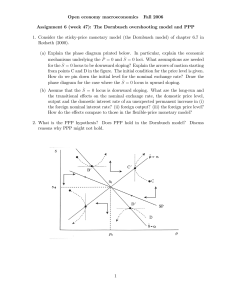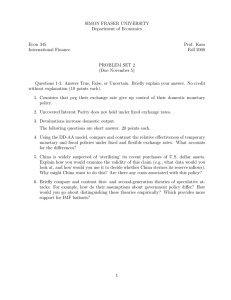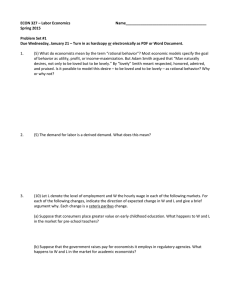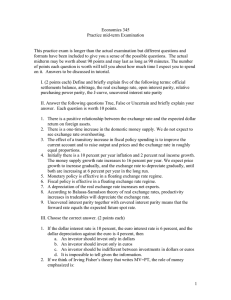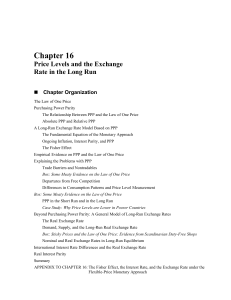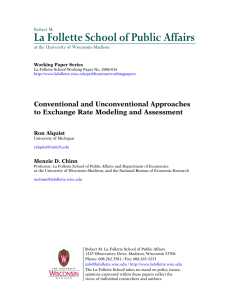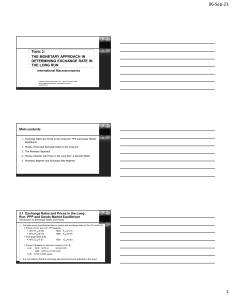SIMON FRASER UNIVERSITY Department of Economics Econ 842 Prof. Kasa
advertisement
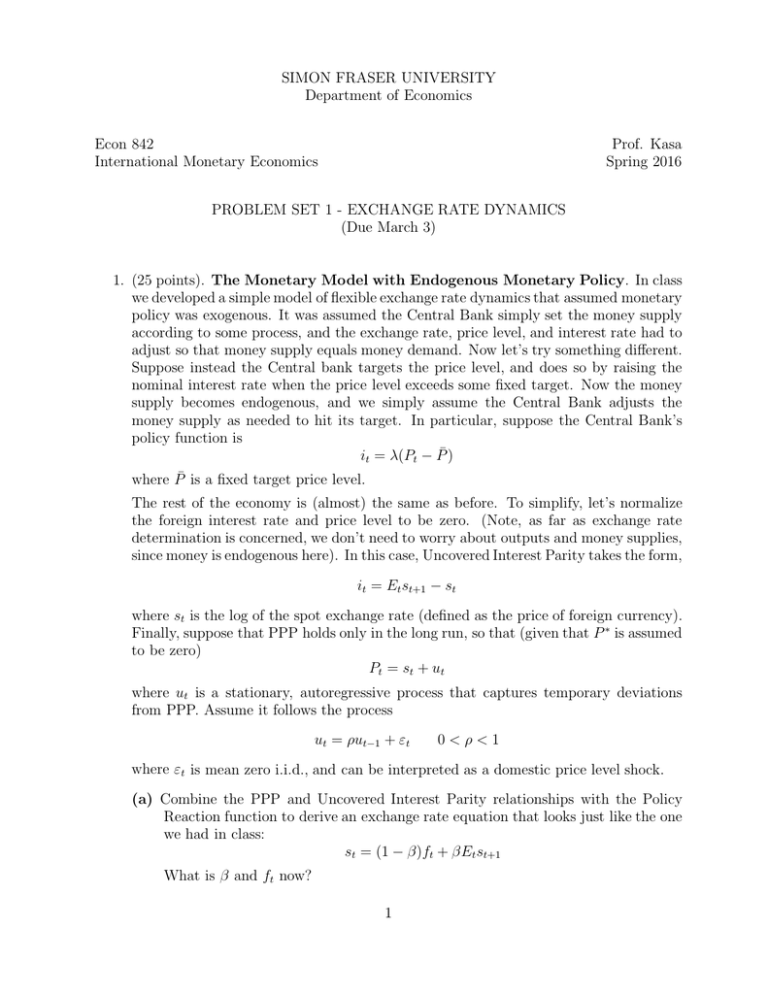
SIMON FRASER UNIVERSITY Department of Economics Econ 842 International Monetary Economics Prof. Kasa Spring 2016 PROBLEM SET 1 - EXCHANGE RATE DYNAMICS (Due March 3) 1. (25 points). The Monetary Model with Endogenous Monetary Policy. In class we developed a simple model of flexible exchange rate dynamics that assumed monetary policy was exogenous. It was assumed the Central Bank simply set the money supply according to some process, and the exchange rate, price level, and interest rate had to adjust so that money supply equals money demand. Now let’s try something different. Suppose instead the Central bank targets the price level, and does so by raising the nominal interest rate when the price level exceeds some fixed target. Now the money supply becomes endogenous, and we simply assume the Central Bank adjusts the money supply as needed to hit its target. In particular, suppose the Central Bank’s policy function is it = λ(Pt − P̄ ) where P̄ is a fixed target price level. The rest of the economy is (almost) the same as before. To simplify, let’s normalize the foreign interest rate and price level to be zero. (Note, as far as exchange rate determination is concerned, we don’t need to worry about outputs and money supplies, since money is endogenous here). In this case, Uncovered Interest Parity takes the form, it = Et st+1 − st where st is the log of the spot exchange rate (defined as the price of foreign currency). Finally, suppose that PPP holds only in the long run, so that (given that P ∗ is assumed to be zero) Pt = st + ut where ut is a stationary, autoregressive process that captures temporary deviations from PPP. Assume it follows the process ut = ρut−1 + εt 0<ρ<1 where εt is mean zero i.i.d., and can be interpreted as a domestic price level shock. (a) Combine the PPP and Uncovered Interest Parity relationships with the Policy Reaction function to derive an exchange rate equation that looks just like the one we had in class: st = (1 − β)ft + βEt st+1 What is β and ft now? 1 (b) Use the given law of motion for ut to solve the above difference equation. (c) How does a positive inflation shock affect the exchange rate? Does the exchange rate appreciate or depreciate? Explain intuitively. 2. (25 points). Collect quarterly (3-month) data on interest rates and the nominal exchange rate for the USA and Canada, going back as far as possible (but not before 1973). Both interest rates and the exchange rate should be sampled at the end-of-period (not averaged). Interest rates for both countries should be on government Treasury Bills. (I can provide the data if you are having trouble finding it). (a) Plot the data, and comment on any interesting features or time periods. (b) Test Uncovered Interest Parity by regressing changes in the log exchange rate on the interest rate differential. Test the hypothesis that UIP holds. (c) If you reject, briefly discuss a couple of possible interpretations/explanations. 2

